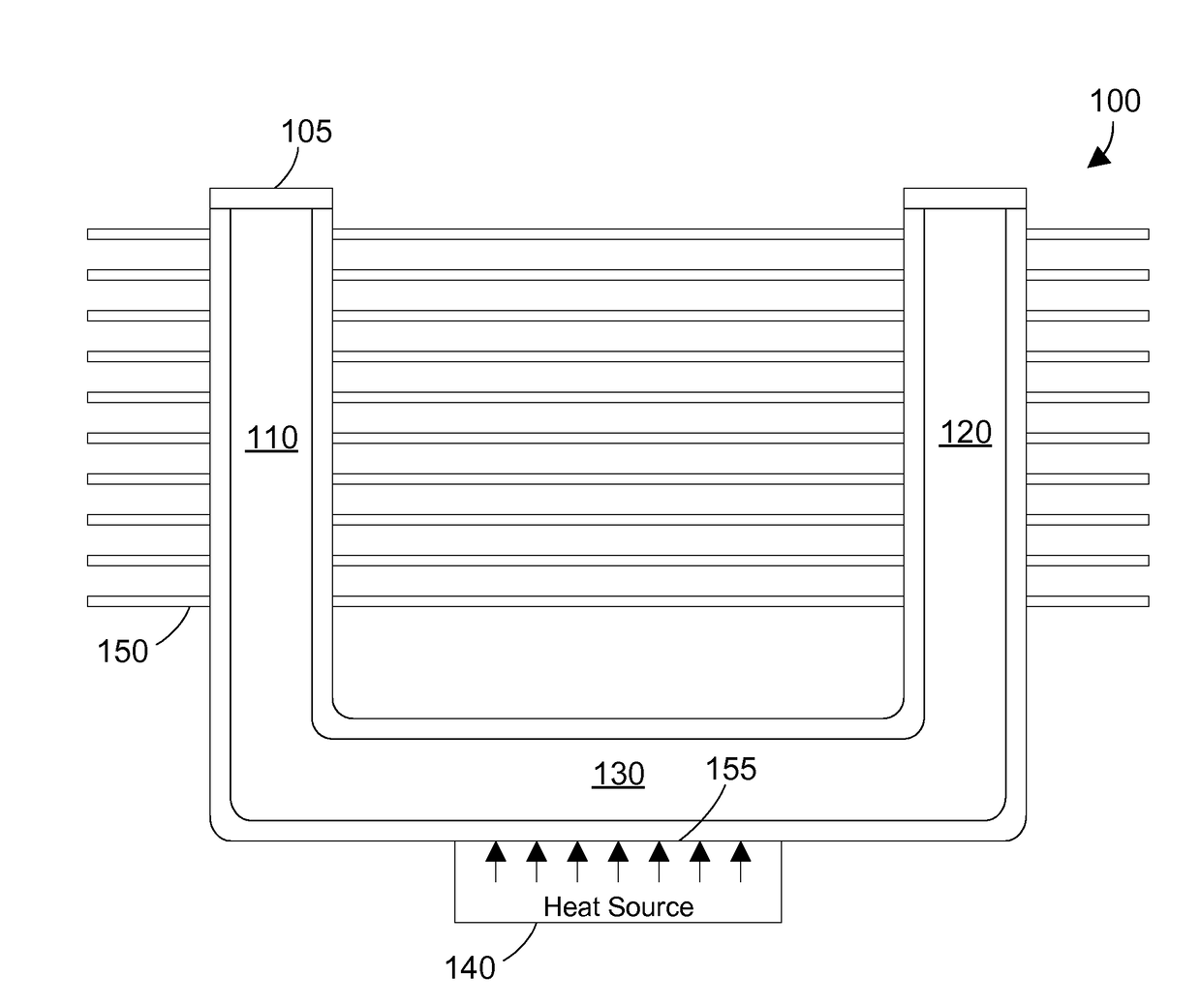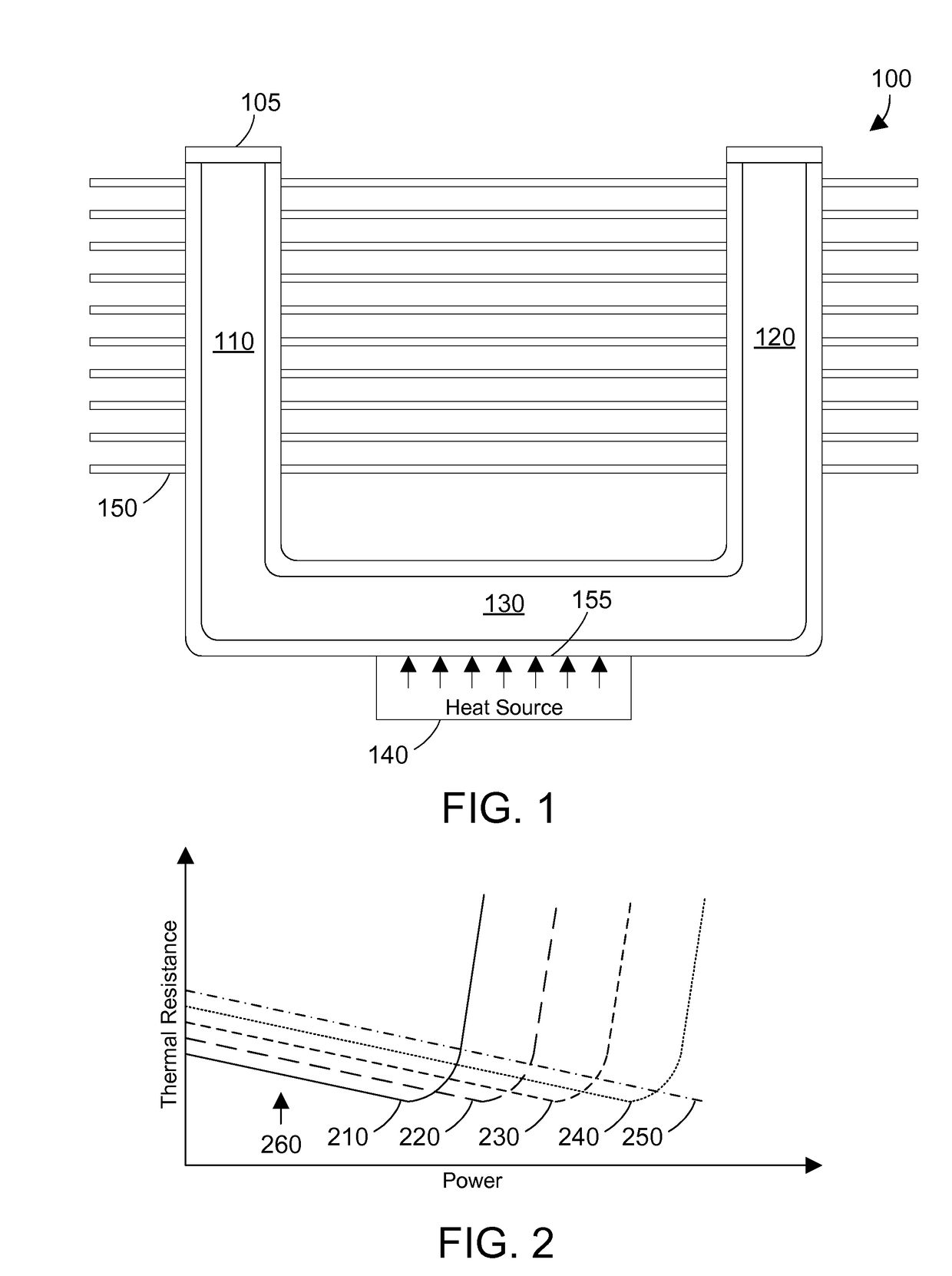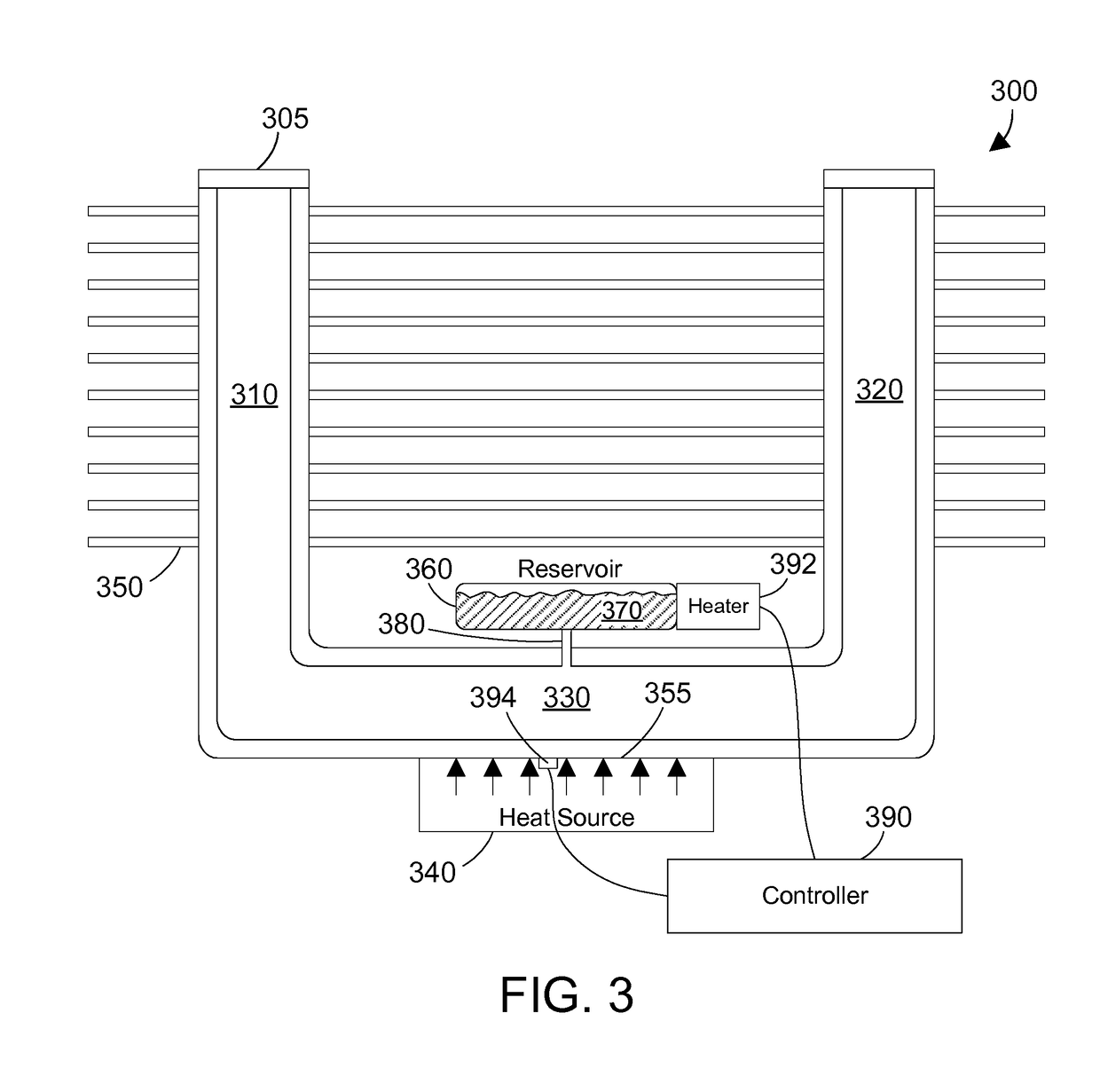Demand-based charging of a heat pipe
a technology of demand-based charging and heat pipes, which is applied in the direction of basic electric elements, electrical equipment, lighting and heating apparatus, etc., can solve the problems of less heat pipe efficiency, and less heat pipe efficiency at a lower power level, so as to increase the amount of liquid, increase the performance of heat pipes at higher power levels, and improve efficiency
- Summary
- Abstract
- Description
- Claims
- Application Information
AI Technical Summary
Benefits of technology
Problems solved by technology
Method used
Image
Examples
Embodiment Construction
[0016]The disclosure and claims herein relate to a heat pipe that includes a reservoir of liquid that is connected to a horizontal portion of the heat pipe via a capillary connection. The heat pipe includes a temperature sensor in proximity to a heat interface in the horizontal portion and a controller that controls a heater for the reservoir. As power into the heat pipe increases, the controller turns on the heater, causing the temperature of the liquid in the reservoir to rise. Liquid then passes from the reservoir through the capillary connection into the horizontal portion, thereby dynamically increasing the amount of liquid in the heat pipe, which increases performance of the heat pipe at higher power levels. When the reservoir heater is turned off, as the heat pipe cools, the liquid condenses and flows back through the capillary connection into the reservoir. The result is a heat pipe that is more efficient at lower power levels and still maintains high efficiency at higher po...
PUM
 Login to View More
Login to View More Abstract
Description
Claims
Application Information
 Login to View More
Login to View More - R&D
- Intellectual Property
- Life Sciences
- Materials
- Tech Scout
- Unparalleled Data Quality
- Higher Quality Content
- 60% Fewer Hallucinations
Browse by: Latest US Patents, China's latest patents, Technical Efficacy Thesaurus, Application Domain, Technology Topic, Popular Technical Reports.
© 2025 PatSnap. All rights reserved.Legal|Privacy policy|Modern Slavery Act Transparency Statement|Sitemap|About US| Contact US: help@patsnap.com



